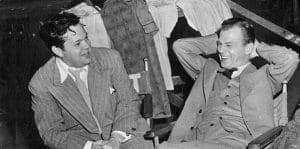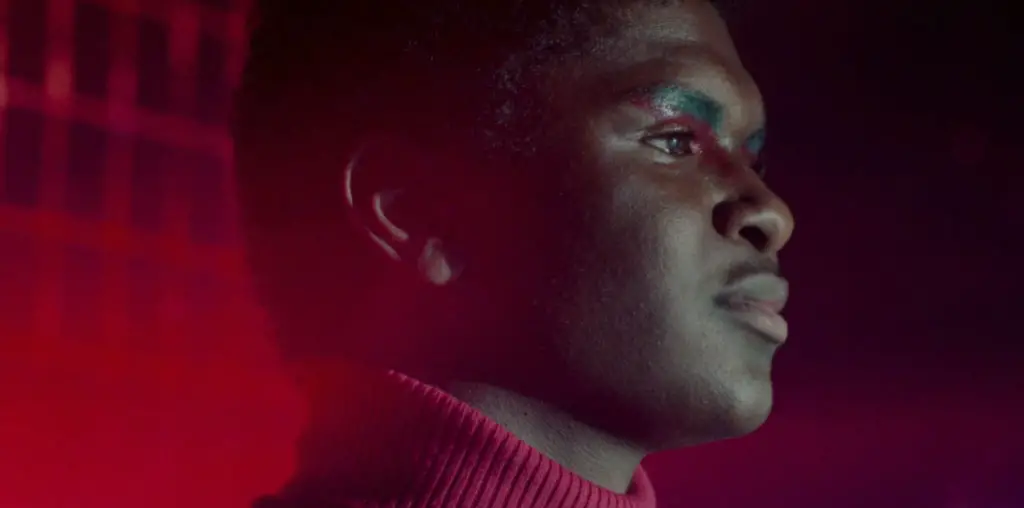
In 1943, RKO Pictures released a small low-budget thriller called Journey into Fear. The company took a loss on the picture, but it gained notoriety because of its association with Orson Welles. An association that had come at the expense of the director, Norman Foster. Over the years, a bizarre conspiracy theory had spread among the film community insisting that Orson Welles, in fact, directed the film and this nobody Norman Foster was just some hack who got the credit.
Norman Foster was my paternal grandfather.
I never knew him. He died two years before I was born. However, both my parents knew him and obviously so did my grandmother and her friends. By all accounts, he was a humble, kind man who genuinely loved his craft. My dad recounts stories of growing up going from theater to theater, seeing five films in a day by everyone from Fellini and Godard to Friedkin and Frankenheimer. Most of the time he enjoyed them; sometimes he stood up and shouted at the screen as with Godard’s Weekend. My mother remembers his admiration for the early German cinema. Ultimately, he gave every film a chance and continued seeing them as often as possible until he physically couldn’t anymore.

“…insisting that Orson Welles, in fact, directed the film and this nobody Norman Foster was just some hack who got the credit.”
So where did this conspiracy originate? Apparently, fanboys can’t read. Beginning in 1969, Peter Bogdanovich recorded a series of conversations with Orson Welles that ended up collected in 1992’s This Is Orson Welles (HarperCollins). Some people must have heard these tapes before the publication and only extracted what they wanted to hear, i.e., that Welles was the mastermind of everything he touched. Welles counters that viewpoint, first by discussing his tempestuous relationship with RKO and then his actual role in the film:
Peter Bogdanovich: Were you supposed to direct Journey into Fear?
Orson Welles: Never at any time. I produced it and Jo Cotten and I wrote the script… The director was Norman Foster, who was a great friend of mine.*
Bogdanovich then asks a very direct question about a very specific scene:
PB: Did you have anything to do with directing the sequence on the building ledge in the rain?*
The answer that follows has been taken out of context for decades.
OW: Well, we all did – whoever was nearest the camera; there was no other way to get it made, because of the difficulties…we were feeling no pain and we were all helping, Jo, Norman, and myself; Norman, being on the crane, was out of touch sometimes. It was a collaborative effort.*
Bogdanovich remains skeptical.
PB: Well, there are parts of it that look like you had something to do with the direction.
OW: I wasn’t even in the country for most of the picture. I was only there for three weeks.*
And then Welles goes on to describe his producer’s role in the film, i.e. supervising the sets and the planning before launching into a tirade about how RKO’s editing destroyed the picture.
Orson Welles was not a humble man. This statement is not an insult nor meant in any way to demean his character. It’s just a fact. He directed great works and they are his directorial legacy. Journey into Fear is not one of them.

“…people who weren’t there continue to perpetuate the myth…”
Unfortunately, a cabal of people who weren’t there continues to perpetuate the myth that Welles actually directed the film. Paul Tatara, a writer for Turner Classic Movies, insists that “Welles’ later assertions, are [not] to be believed.” He continues: “Anyone who’s familiar with Welles’ expressionistic shooting style will see his fingerprints all over Journey into Fear…Welles, to put it kindly, had a propensity toward re-inventing his own past, so that might explain his insistence that he was mostly a producer and screenwriter on [the picture].” Needless to say, Mr. Tatara, born a full twenty years after the film was released, openly refuses to believe Welles’ own words. Instead, he reimagines a past that fits his own perception. Fake news anyone?
Furthermore, Tatara goes so far as to rewrite the credits, inserting Welles as co-director in an attempt to create his own truth. IMDB has been on this bandwagon for years. Nevermind that this is a direct violation of DGA policy, Tatara has revealed his complete ineptitude as a film critic. While gushing over the visual style that he claims could only have been delivered by the great Orson Welles, he also calls the producer/director’s performance in the film “hambone,” “bizarre,” and “some kind of ill-defined parody.” Oddly, he completely fails to list Welles as an actor in his credits. Apparently, the auteur was so busy directing the picture, he couldn’t be bothered to appear in it.
Sadly, these proclamations come from those who know everything about Welles’ work and nothing about Norman Foster’s. Norman emerged in the late 1920s as a leading man starring opposite Ginger Rogers, Clara Bow, and Claudette Colbert. In 1936, he directed his first film, I Cover Chinatown, an independent thriller marked with an unusual amount of exterior shots for the time as well as handheld camerawork from a car. In 1937, he then directed Fair Warning for 20th Century Fox, where he utilized low camera angles to bring ceiling corners into his frames. This led him to become a regular director for the Mr. Moto and Charlie Chan franchises through the ‘30s, where he played with high and low camera angles and underwater photography.

“…no director is safe.”
The ‘40s brought Journey into Fear, his work on Welles’ It’s All True, several Mexican films including El Ahijado de la Muerte, Rachel and the Stranger (starring Loretta Young, William Holden, and Robert Mitchum) and Kiss the Blood Off My Hands (with Joan Fontaine and Burt Lancaster). Woman on the Run kicked off the ‘50s, where he directed Davey Crockett and Zorro for Disney. He continued working up until his death in the ‘70s, his final performance as Jake’s desperate agent in Welles’ still unreleased The Other Side of the Wind.
What’s the big deal then? He directed plenty of films, what’s losing credit on one? The fact is, this is a slippery slope that cannot be tolerated. If we allow Norman Foster to lose credit for Journey into Fear, no director is safe. Who’s to stop the next guy from claiming that Robert de Niro actually directed Mean Streets (certainly explains his small role) or that Arthur C. Clarke created the visual style of 2001: A Space Odessy? Perhaps it was Steven Spielberg, not George Lucas, whose eye drove Star Wars and we all know of course that Apocalypse Now is Marlon Brando’s vision since Francis Ford Coppola was losing his mind in the jungle.
The Director’s Guild of America must step forward to correct these instances when they occur because, if they don’t, credit means nothing. Norman Foster worked damn hard on Journey into Fear and he deserves his credit just as Orson Welles and Joseph Cotten deserve theirs. Let’s not give in to the present mentality and hold something as fact simply because we want to believe it. We’re losing grip on our reality; don’t let us lose our escape as well.
*Excerpts from This Is Orson Welles by Peter Bogdanovich (HarperCollins, 1992) reprinted via the Fair Use doctrine of US Copyright Law.


What a very cool article. A detailed look into a past unknown by most. A tale of credit and recognition.
Thanks to the one and only king of fright, the great Grimsley, for forwarding this article to me. And thanks to Chuck Foster for taking the time to write an article of enlightenment.
Robbie. Author of, Written In Red Dreams.
Chuck Foster has written a beautiful and stirring account of his grandfather’s work. What Tatara and other conspiracy theorists are trying to do to Norman Foster’s legacy is so wrong and the Directors Guild of America should step in! I applaud you Chuck! Keep fighting to preserve his legacy!
I mainly know Mr. Foster’s work from the “Mr. Moto ” movies , and you can see he’s a great director !
Perhaps Tatara should stick to reviewing films, instead of attempting to rewrite history. I recognize he cannot interview Mr. Welles, but his words couldn’t have been clearer, no matter what Peter Bogdanovich tried to get him to say. Norman Foster directed Journey Into Fear–case closed! I have seen a number of the films Mr. Foster directed, and he was a brilliant director. The fact that he remained humble speaks to his character. Give credit where credit is due.
This is wonderful and so beautifully stated. Obviously I never knew either of your grandparents, but in my research of Sally, I’ve found countless mentions of Norman’s directorial and artistic talents. Claudette Colbert (post divorce!) sang his praises after hearing he would be directing- she’d been urging him to, for years. Sally discussed the reason for the move to Mexico- for the freedom of artistic expression. (This was also supported by Dolores del Río.) Norman would later be nominated for an award for directorial achievement in television, for an episode of The Loretta Young Show. This was not, by any stretch of the imagination, a dull, uninspired man. Norman Foster was an artist, plain and simple, and the director of Journey Into Fear.
This is so true. You got it right. I knew Norman Foster, a great director and a humble genius.